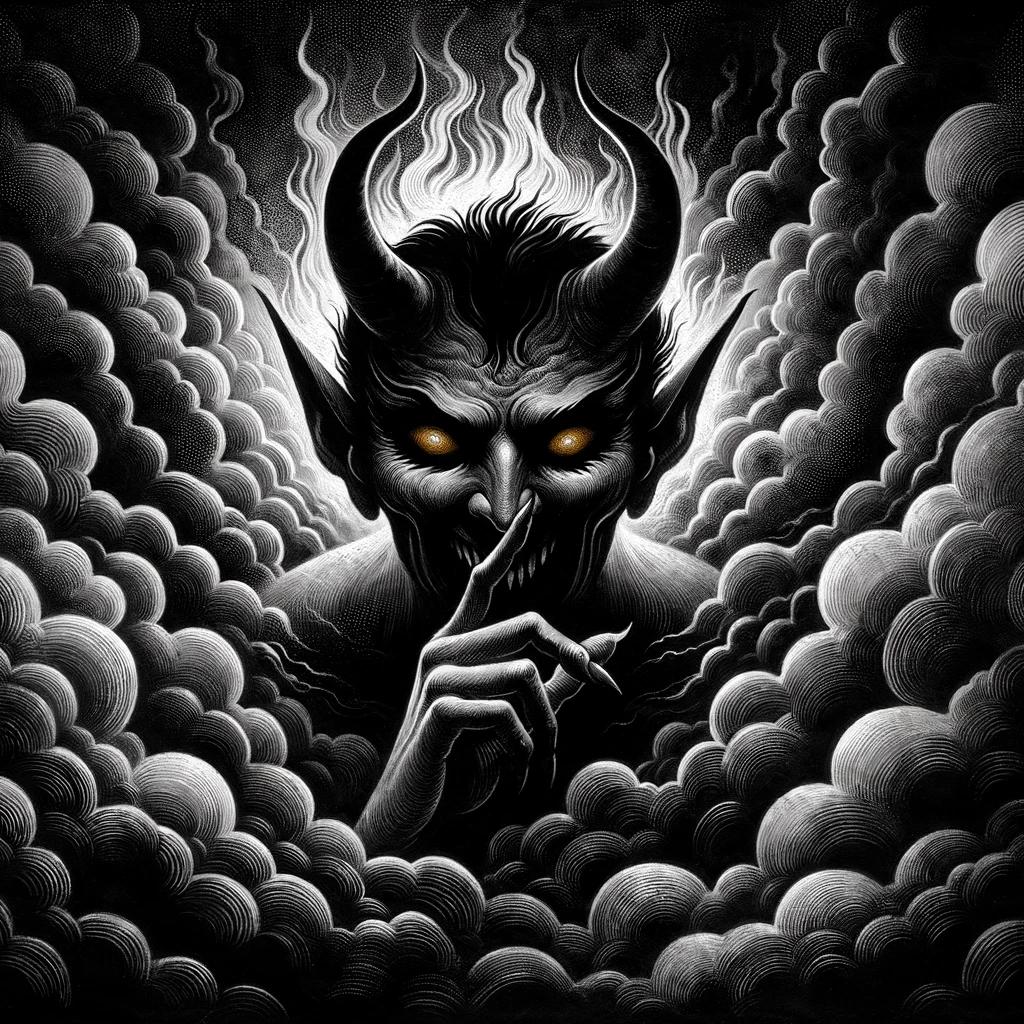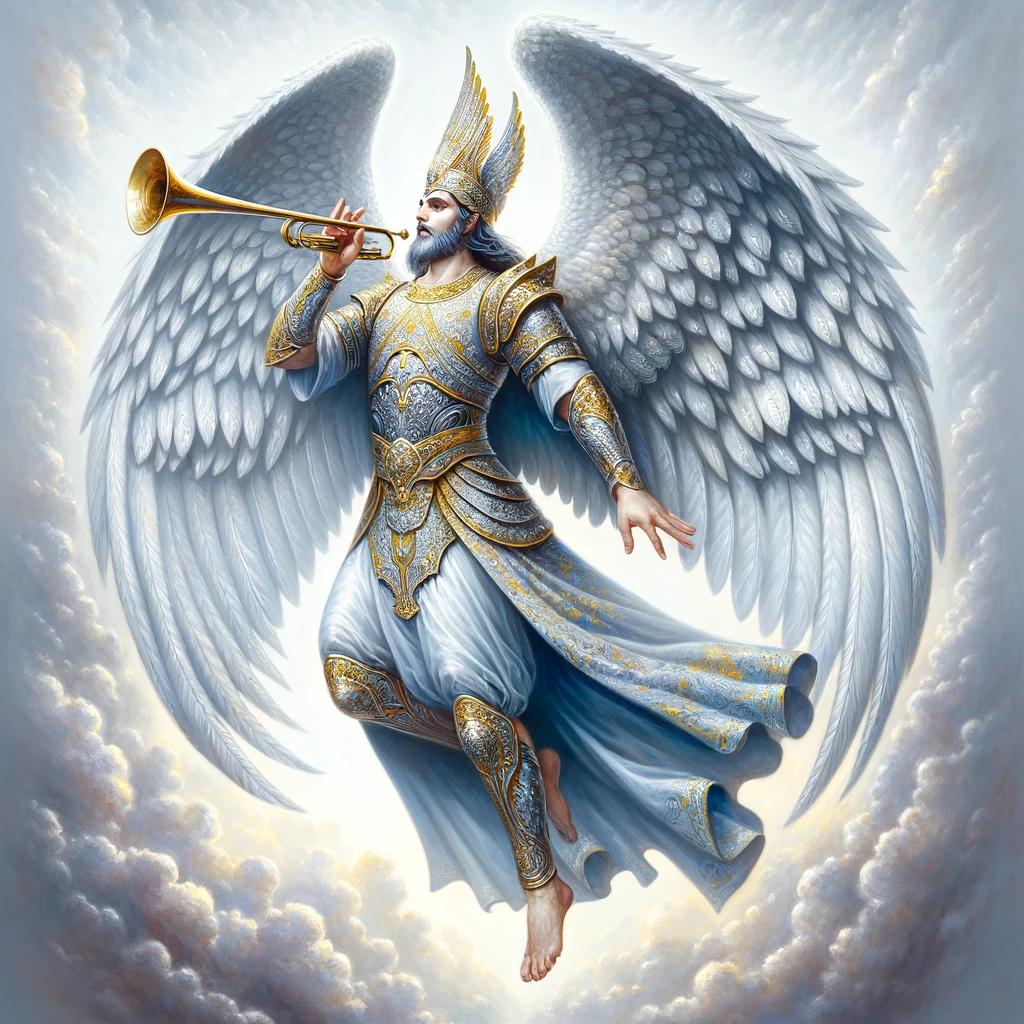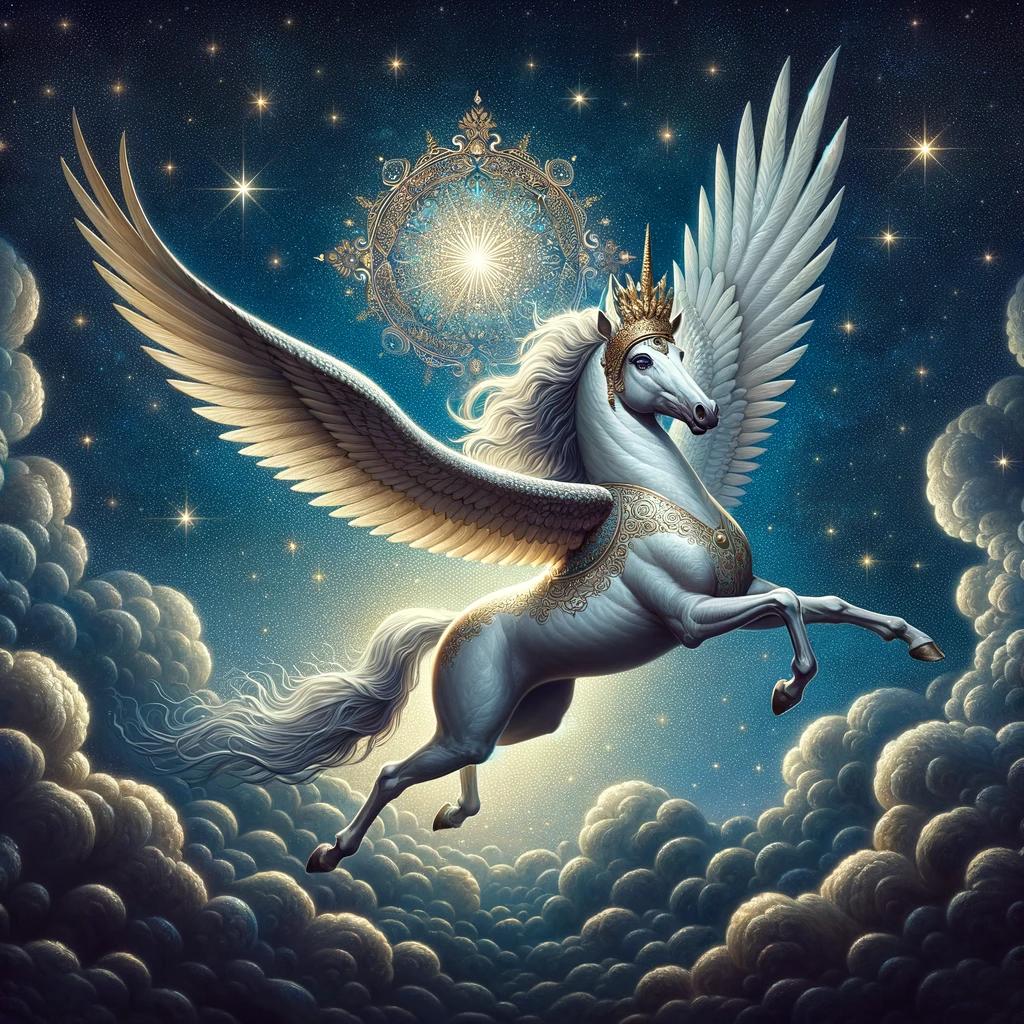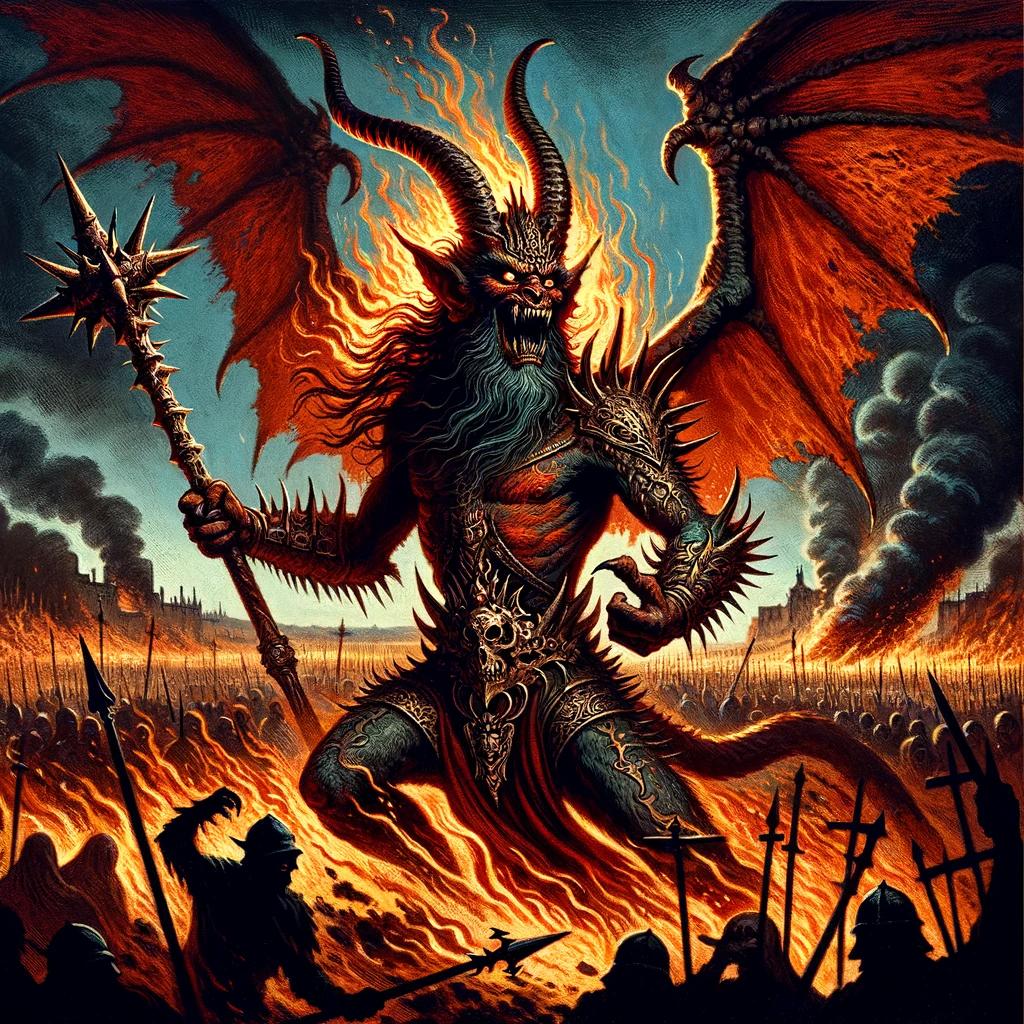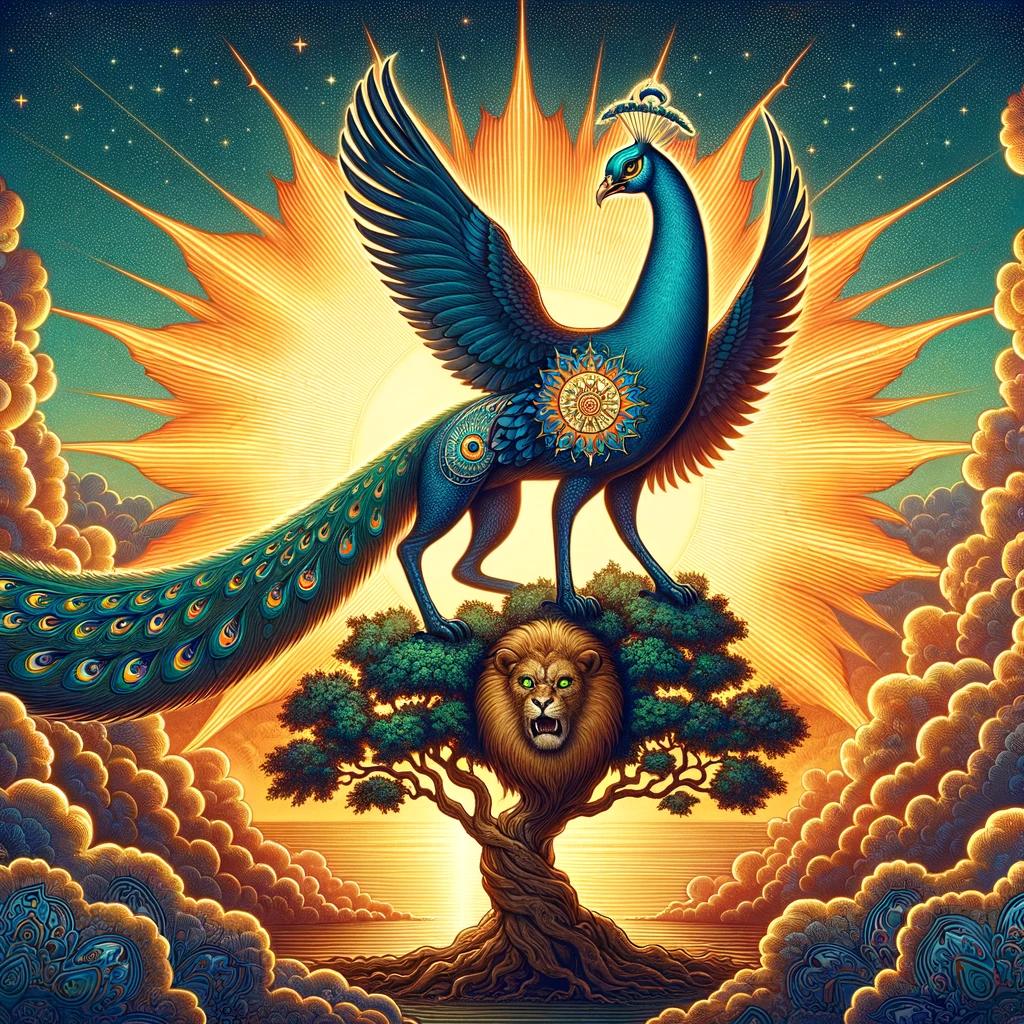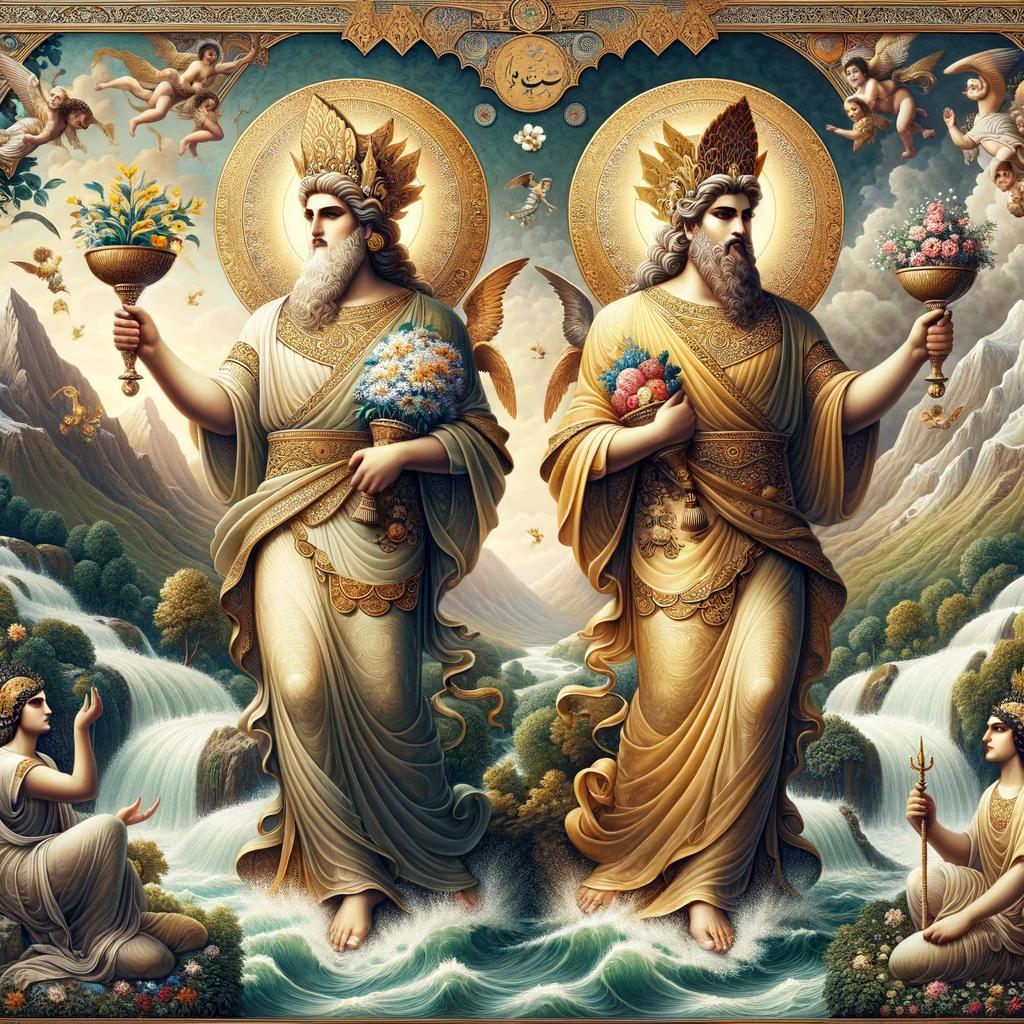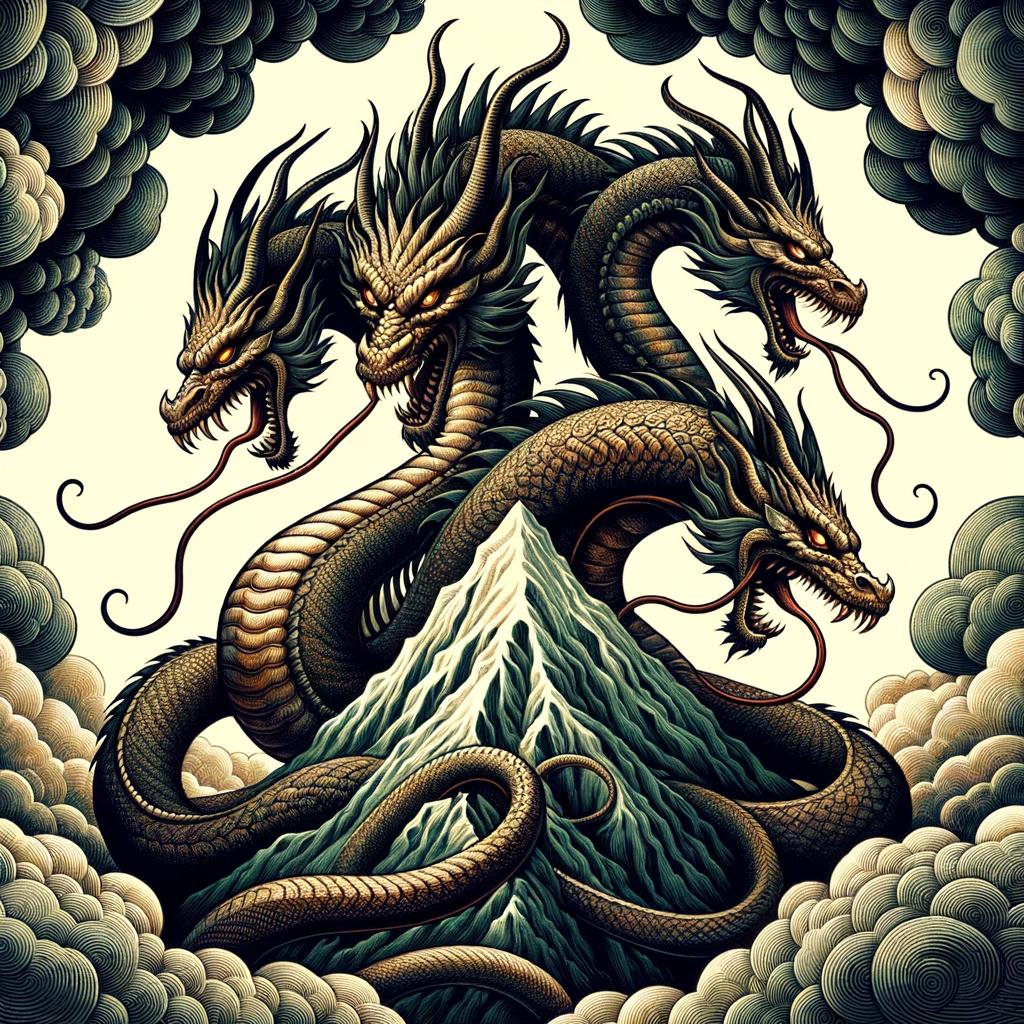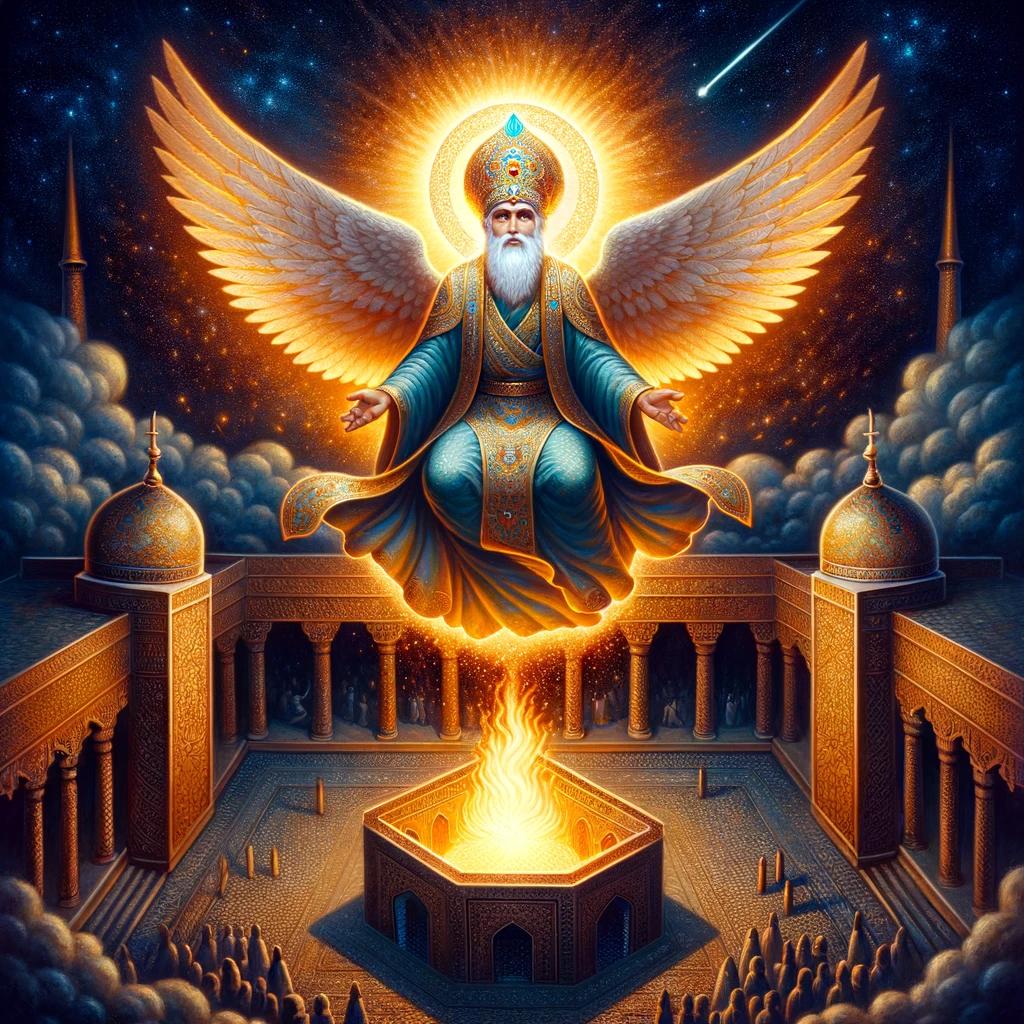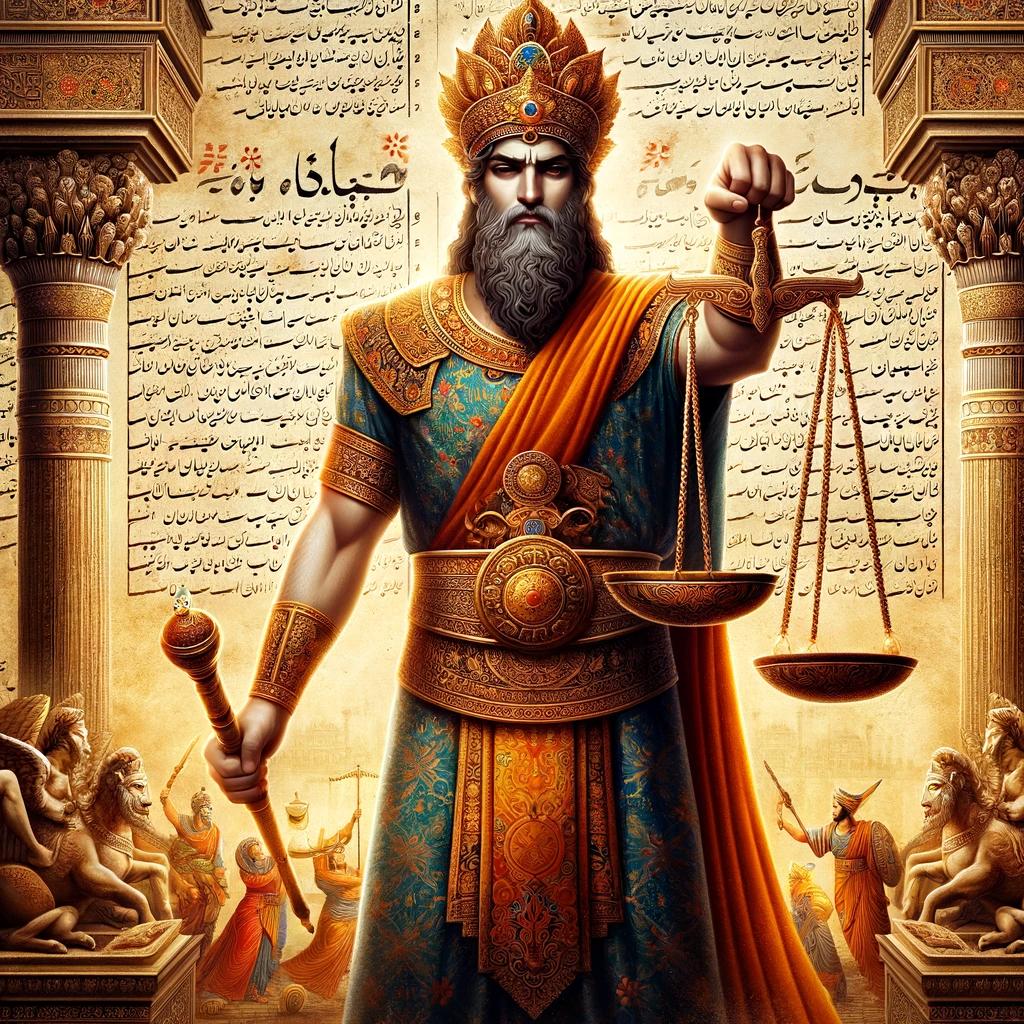Akem Manah: The Avestan Demon of Evil Purpose
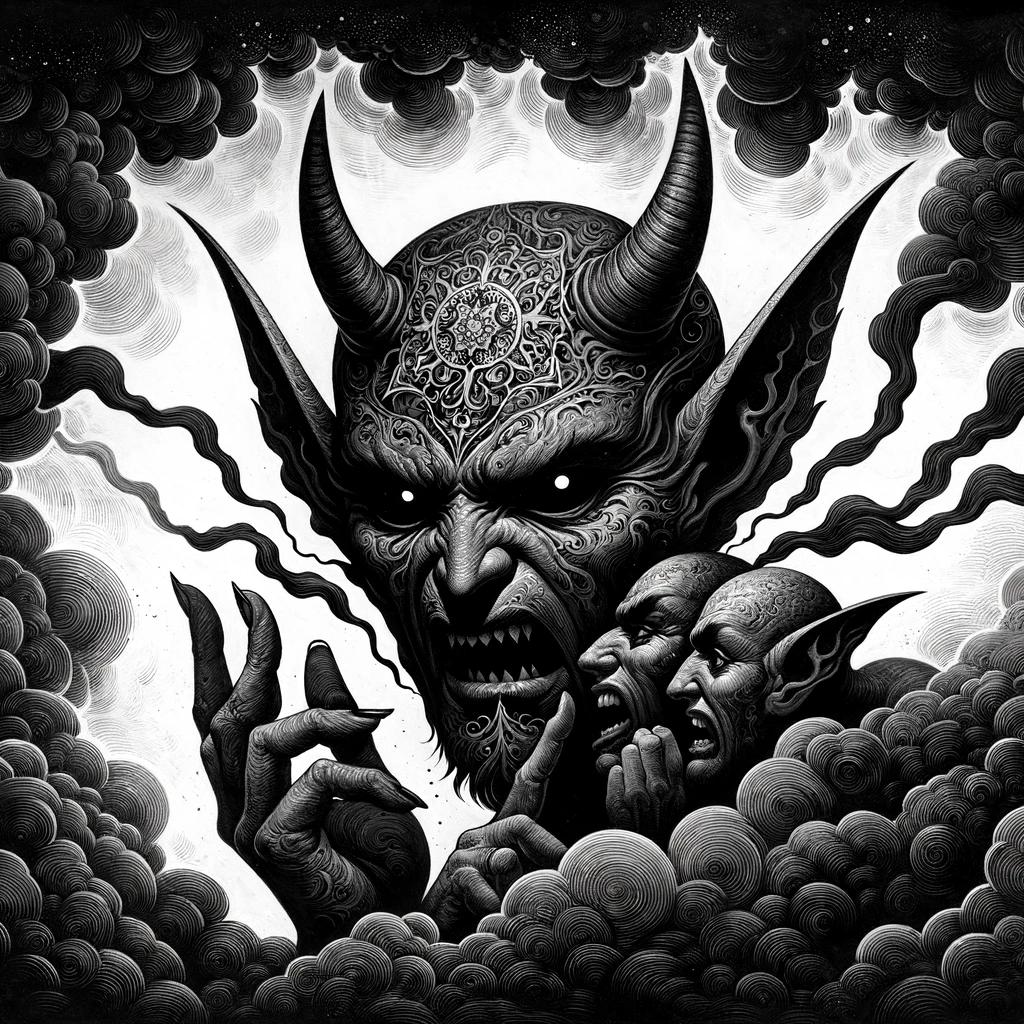
The Akem Manah demon, also known in Middle Persian as Akomanah and in New Persian contexts, symbolizes a significant entity within Zoroastrianism, representing evil thinking and evil purpose. This malevolent force, known for its ability to manipulate and mentally abuse, seeks to disrupt peace and ultimately destroy realms, embodying the very essence of what the Avestan language terms as evil mind or evil thinking.
Despite his inability to attain godhood or eliminate legendary figures, Akem Manah has taken lives, manipulated countless individuals, and gathered powerful artifacts in his eternal quest against goodness. This section explores the origins, powers, and influence of this sinister demon across various media, engaging with the debates and controversies surrounding his portrayal and the implications for cultural sensitivity.
Discover the enduring enigma of Akem Manah and his evolving characterization, from ancient texts to modern interpretations, and understand why he remains a figure of intrigue and horror in Zoroastrianism.
Background of Akem Manah Demon in Zoroastrianism
History of Zoroastrianism and the Demons
Zoroastrianism, one of the world’s oldest religions, originated in ancient Persia (modern-day Iran) and has its roots in the teachings of the prophet Zarathustra (Zoroaster).
Within this rich religious tradition, demons, including the Zoroastrian Daeva of which Akem Manah is a part, play a significant role, embodying the eternal battle between good and evil, between Ahura Mazda‘s divine wisdom (Vohu Manah) and the destructive forces represented by Akem Manah and his ilk.
Akem Manah: The Evil Mind Demon
Among the demonic entities described in Zoroastrianism, Akem Manah stands out as a particularly prominent figure. Referred to in the Avestan language as the embodiment of evil purpose, Akem Manah symbolizes the internal struggle between positive and negative impulses, seeking to sway individuals towards dark paths through deceit and manipulation.
Akem Manah’s Role in Zoroastrian Texts
Within Zoroastrian texts, Akem Manah is depicted as a powerful demonic entity with immense influence, his presence reaching far beyond the confines of Zoroastrian cosmology. Believed to permeate human consciousness, Akem Manah constantly tempts individuals, attempting to divert them from the path of righteousness and into his realm of deceit and corruption.
He confronts the prophet Zoroaster, his rival, in a symbolic clash that highlights the eternal battle between good and evil.
The Battle Between Good and Evil: Akem Manah’s Opposition
The Zoroastrian religion places great emphasis on the struggle between good and evil, with Akem Manah representing the dark side of this cosmic duel. Opposed by the divine principle of Vohu Manah (Good Mind), the conflict between these forces underscores the Zoroastrian view of the universe as a battlefield between light and darkness, order and chaos.
Akem Manah, in his quest to destroy aka Manah, showcases the third attempt of evil forces to undermine the cosmic order, following the first and the second confrontations in Zoroastrian lore.
The Influence of Akem Manah in Zoroastrian Beliefs
This ongoing struggle against Akem Manah’s allure is a core part of Zoroastrian ethical teachings, reminding followers of the importance of choosing good over evil in daily life.
Akem Manah in Mythology and Literature
Akem Manah, the embodiment of evil purpose, has captivated the fascination of mythologists and literary enthusiasts alike.
This section delves into the depiction of Akem Manah in various mythological texts and its resonance in literature through the ages.
Akem Manah in the Story of Rostam and the Demon Castle
In the epic Persian poem, the Shahnameh, Akem Manah is portrayed as a formidable adversary in the story of Rostam and the Demon Castle.
Here, Akem Manah, embodying primal forces of darkness and evil, confronts Rostam, the valiant hero, in a fierce battle to protect realms from demonic malevolence. In an iconic moment, Rostam throws him into the sky, symbolizing the triumph of good over evil and the heroic abilities of humans to overcome even the most daunting of demonic threats.
Akem Manah in Other Ancient Mythologies and Folklore
Beyond Zoroastrianism, Akem Manah, known in Middle Persian as Akoman and in New Persian as Akvan, bears resemblances to other malevolent entities in ancient mythologies and folklore. These parallels across cultures indicate the existence of archetypal themes of evil thinking, evil purpose, and the personification of malicious intent in different mythological traditions, demonstrating the universal struggle against dark forces that seek to corrupt and destroy.
This malign influence mirrors the Zoroastrian depiction of Akem Manah, who, under the guise of Middle Persian Akoman and New Persian Akvan, showcases the adaptability and enduring nature of his malevolence.
Akem Manah’s Symbolism and Representations in Literary Works
In literature, Akem Manah’s symbolism is diverse and multifaceted, representing the temptations and corrupting influences that can plague the human psyche. His sinister presence serves as a catalyst for moral struggles, internal conflicts, and tests of character, illustrating the timeless relevance of the battle between good and evil in the human condition.
Akem Manah, the daeva of evil mind, made evil the central theme of his existence, affecting not just individuals but entire societies.
The Influence of Aka Manah in Modern Pop Culture
Aka Manah’s influence extends beyond ancient myths and classical literature into modern popular culture.
In contemporary literature, films, and video games, Aka Manah often appears as a formidable antagonist, challenging the heroes to overcome their deepest fears and confront the embodiment of pure evil. The demon’s iconic characteristics, evil purpose, and malevolent intentions have solidified its place in the pantheon of enduring and captivating fictional villains, making him and his archetype a subject of fascination and discussion among fans and creators alike.
Traits and Powers of Aka Manah demon
Understanding these aspects provides insight into the vast potential for chaos and malevolence he wields. His ability to manipulate and the depth of his malign influence reflect the profound impact he can have on the world and its inhabitants.
Aka Manah’s Appearance and Characteristics
- Aka Manah is often depicted as a dark, sinister figure, emanating an aura of darkness and malevolence, making evil the objectification of his very essence.
- His physical appearance is shrouded in obscurity, with ancient texts describing him as a shape-shifting entity, capable of assuming various forms to deceive and corrupt.
- He is known to possess an unnerving presence, instilling fear and unease in those unfortunate enough to encounter him.
- One of his defining characteristics is his ability to manipulate and exploit the weaknesses of individuals, driving them towards malicious deeds through his malign influence.
Aka Manah’s Powers of Manipulation and Mental Abuse
Aka Manah is a master manipulator, adept at exploiting the vulnerabilities of others, weaving webs of deceit and control.
His evil intention is to corrupt minds and sow discord. His powers showcase not only the depth of his malevolence but also the ability to influence and corrupt the psyche of individuals and communities.
- He possesses unparalleled mental abilities, capable of corrupting the minds of the weak-willed and vulnerable, planting seeds of doubt and driving them towards malevolence.
- Aka Manah delves into the deepest recesses of one’s psyche, twisting thoughts and emotions with his insidious influence.
- His powers of manipulation extend beyond individual minds, as he can sow discord and turmoil within communities and societies, exploiting existing divisions and tensions.
Aka Manah’s Evil Intentions and Goals
Aka Manah’s intentions are deeply rooted in malevolence and chaos, seeking to disrupt the delicate balance between good and evil.
His ultimate goal is to undermine the moral and ethical foundations of society, making evil the central force in the lives of his victims.
- His ultimate goal is to sow seeds of corruption and evil across realms, undermining the forces of good and jeopardizing the stability of the cosmic order.
- Aka Manah thrives on causing suffering and misery, reveling in the chaos and destruction he inflicts upon both mortals and divine beings.
- He seeks power and dominance, constantly searching for opportunities to expand his influence and tighten his grip on those who succumb to his manipulative ways.
Aka Manah’s Defeats and Unfulfilled Aspirations
While Aka Manah has orchestrated countless acts of malice and destruction, his journey is not without setbacks and unfulfilled ambitions.
His conflicts with Zoroaster, his eternal rival, and the defeats he has suffered at the hands of those who resist his influence, underscore the ongoing battle between good and evil, and the possibility of overcoming even the darkest of forces.
- Despite his relentless efforts, Aka Manah has been unable to achieve godhood, perpetually driven by a desire that was made evil, to ascend to divine status.
- His attempts to seduce the prophet Zoroaster, his eternal opponent, have been unsuccessful, leading to defeat and frustration.
- Aka Manah’s aspirations to fully destroy the sacred realms and disrupt the peace of the Omniverse remain unattained, as forces of good and bravery persist in opposing his malevolence.
Exploring the complex traits and powers of Aka Manah demon provides a deeper understanding of the immense threat he poses and the challenges faced by those who stand against him.
Aka Manah in Popular Media
Aka Manah in Movies and Television: Bird Box and Beyond
Aka Manah’s influence in popular media can be seen in movies and television shows, with one notable example being the film Bird Box. In this post-apocalyptic thriller, Aka Manah’s essence is depicted as a malevolent force driving people to commit acts of violence and self-destruction.
The concept of an unseen entity manipulating human minds is a central theme, evoking the same sense of psychological horror associated with the legend of Aka Manah in Zoroastrianism.
Aka Manah’s Presence in Video Games and Comics
In the realm of video games and comics, Aka Manah has captivated audiences with his dark presence and mysterious powers.
Titles like Devil May Cry and The Witcher feature characters inspired by the archetype of Aka Manah, showcasing his manipulative nature and penchant for causing chaos. In comics, he often serves as a formidable adversary to superhuman protagonists, testing their willpower and morality.
Aka Manah’s Impact on Horror and Supernatural Genres
Aka Manah’s portrayal has left a lasting impact on the horror and supernatural genres. His malevolence and ability to toy with the human psyche have inspired numerous works of fiction, including books, films, and television series.
His presence is often associated with psychological terror, inner demons, and the struggle between good and evil. Aka Manah’s character continues to captivate audiences, leaving them intrigued by the depths of his malevolence and the evil purpose he represents, further illustrating the daeva evil mind’s influence in modern narratives.
Controversies and Debates Surrounding Aka Manah
The presence of Aka Manah in Zoroastrianism has sparked numerous interpretations, debates, and controversies among scholars and followers of the faith. This section delves into some of the key areas of contention surrounding Aka Manah demon, discussing all aspects of his portrayal and the implications thereof, including his eternal conflict with Vohu Manah and the struggles against Zoroaster, his eternal rival.
Interpretations and Debates about Aka Manah’s Role in Zoroastrianism
Within Zoroastrianism, there are divergent views regarding the significance and role of Aka Manah. Some interpret Aka Manah as a literal, malevolent demonic force, embodying mind evil purpose and purpose evil thinking, while others see him as a metaphorical representation of human vices and negativity.
The debate revolves around the perception of Aka Manah as a distinct entity or as a symbol of inner struggles, with some questioning his intention and the sensual desire that drives him.
Scholars also discuss the complex relationship between Aka Manah and Zoroaster, highlighting the prophet’s resistance to Akem Manah’s malign influence.
Additionally, scholars question the extent of Aka Manah’s impact in Zoroastrian cosmology.
Some argue that his role is minor compared to other demons, such as Angra Mainyu, while others emphasize Aka Manah’s prominence and position in opposition to the forces of good, particularly his confrontations with Prophet Zoroaster, his attempts to seduce and corrupt him, and his rivalry with Vohu Manah, the embodiment of the good mind.
Aka Manah’s Representation and Cultural Sensitivity
Discussions regarding how Aka Manah is portrayed in various media forms have raised concerns about cultural sensitivity. Critics argue that misinterpretations or sensationalized depictions can perpetuate stereotypes or misunderstandings about Zoroastrian beliefs and demonology.
Concerns also arise regarding the portrayal of Aka Manah’s evil intentions and his complex role within the Zoroastrian tradition, urging creators to approach his character with respect and accuracy.
Moreover, conversations have emerged regarding the appropriation of religious symbols and figures like Aka Manah in popular culture.
Cultural sensitivity and respectful representation are key points of contention, prompting discussions on responsible storytelling and accurate representation of religious beliefs.
Alternative Perspectives and Criticisms of Aka Manah’s Characterization
Alternative perspectives challenge traditional interpretations of Aka Manah, offering critical analyses of his characterization. Critics argue that labeling Aka Manah as purely evil overlooks his potential symbolism as the manifestation of human flaws and shortcomings.
They advocate for a more nuanced understanding of Aka Manah’s role in the Zoroastrian belief system, suggesting that his actions and intentions, while traditionally viewed as malevolent, could also represent the internal conflicts and moral dilemmas faced by individuals.
- Are there any similarities and differences between Aka Manah and other demons within Zoroastrianism, such as his conflict with Vohu Manah and the other daevas?
- How does the portrayal of Aka Manah in popular media impact perceptions of Zoroastrianism, especially when his conflicts with Prophet Zoroaster and manipulation of human psyche are emphasized?
- What steps can be taken to ensure cultural sensitivity and accurate representation in depictions of Aka Manah, considering his complex role in the religion and his significance as a daeva of evil mind?
- Has there been any response from Zoroastrian communities regarding the portrayal of Aka Manah in pop culture, especially in contexts that may misrepresent his nature and intentions?
- Are there any notable alternative interpretations of Aka Manah’s character, perhaps focusing on his symbolic representation of human vices rather than literal evil?
These questions and debates continue to contribute to a deeper understanding of Aka Manah and his place within the religious and cultural landscape.
Frequently Asked Questions (FAQs) about Aka Manah demon
Who is Aka Manah and what is his significance in demonology?
Aka Manah is a prominent figure in Zoroastrian demonology, known as the Evil Mind Demon and considered the leader of demonic entities. His immense powers of manipulation and mental abuse, his confrontations with Prophet Zoroaster, and his rivalry with Vohu Manah underscore his role as a malevolent force seeking to disrupt peace and destroy realms within the Omniverse.
His significance is further emphasized by his intention to overthrow the moral order, showcasing the depth of his malevolence and the complexity of his character in the cosmic struggle between good and evil.
How does Aka Manah’s portrayal differ in Zoroastrian texts and popular media?
In Zoroastrian texts, Aka Manah, also referred to as the Akamana demon or Akamanah demon, is depicted as a formidable demon with malicious intentions and a relentless pursuit of power. His portrayal in popular media may vary, with adaptations sometimes adding new dimensions or altering aspects of his character to fit different narratives.
However, the core traits of manipulation, mental abuse, and his role as a malevolent entity remain consistent across different interpretations, suggesting that his fundamental nature as a corrupter of minds is a universally recognized attribute.
What are some notable examples of Aka Manah in literature and pop culture?
Aka Manah has made appearances in various literary works and pop culture references. One notable example is in the story of Rostam and the Demon Castle, where Aka Manah serves as a formidable antagonist, showcasing his ability to confront the hero and manipulate the circumstances to his advantage.
Additionally, Aka Manah has influenced characters and storylines in movies, television shows, video games, and comics, often embodying the archetype of the cunning and manipulative villain. These portrayals highlight his versatility as a character and the universal appeal of his malevolence.
Is Aka Manah demon a widely recognized figure outside of Zoroastrianism?
While Aka Manah is most widely recognized within Zoroastrianism, his influence has transcended religious boundaries to some extent. Pop culture adaptations and references have introduced Aka Manah to a broader audience, allowing his character to resonate beyond specific religious contexts.
However, his recognition and significance may vary depending on cultural awareness and familiarity with Zoroastrian mythology and demonology across different regions, making him a complex figure in the realm of mythology and popular culture alike.
How has Aka Manah’s character evolved over time?
Aka Manah’s character has evolved through various interpretations and adaptations over time. While his core traits remain consistent, modern retellings often explore different facets of his personality and motivations. Some interpretations depict Aka Manah as a tragic figure driven by his own insecurities and desires, adding complexity to his traditionally malevolent persona.
The evolving nature of Aka Manah’s character reflects the artistic liberties taken by creators and their unique visions of this enigmatic demon, suggesting a continued fascination and reinterpretation of his role within both Zoroastrianism and popular culture.

